Montefiore Medical Center - History and Milestones
From its founding in 1884 by Jewish philanthropists as a care facility for patients with chronic illnesses to its status today as one of the largest healthcare systems in the nation, Montefiore Medical Center has been at the forefront—translating scientific breakthroughs into diagnostics and treatments that save lives, educating the next generation of compassionate healthcare professionals, and combining our deep commitment to the community with nationally-renowned expertise.
A look at our history reveals traditions set in our earliest days that still guide our mission today.
Timeline: 1884-1920s | 1930-1940s | 1950-1970s | 1980s | 1990s | 2000s to Present | Expansion
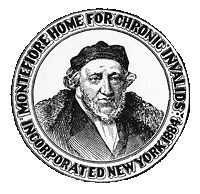
1884-1920s
The Montefiore Home for Chronic Invalids was founded in 1884 by Jewish philanthropists who wanted to do something for chronically ill people whom other hospitals of the day would not help. Montefiore quickly expanded and began an age of delivery system innovation, medical education and scientific research that it continues today as a premier academic medical center.
It was in 1890 that Montefiore was among the first to test tuberculin for the diagnosis of tuberculosis. In 1901, asthma patients at Montefiore were treated with adrenalin chloride—one of the earliest clinical uses of adrenalin.
Groundbreaking milestones continued with the development of the cardiotachometer in the 1920s, an innovative instrument to measure the heart’s beat. The device is now on display in the Smithsonian Museum. Montefiore would also build the foundations of its commitment to innovative health care when, in 1905, it established one of the nation’s first hospital-based departments of social work to meet the psychosocial and home-care needs of patients and their families. In 1912, Montefiore expanded its services and built a new hospital in the Bronx. Thus began a new era for Montefiore as it began partnering with the borough to create a world-class healthcare model accessible to anyone in need. Continuing to blaze trails, the first woman joined Montefiore's house staff in 1916.
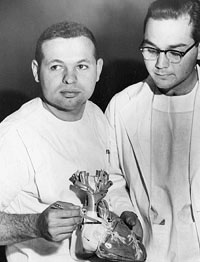
1930-1940s
During the 1930s, African-American medical residents were accepted at Montefiore at a time when such integration was rare. The following decade, in 1945, the first headache unit and the nation’s first hospital-based Department of Home Health Care were both established. Our Montefiore Medical Group practice was established in 1948 to service one of the nation’s first HMOs and has since expanded to more than 20 locations throughout the New York metropolitan area.
1950-1970s
Physicians at Montefiore continued to achieve medical breakthroughs when they developed a heart-lung machine used in a series of operations to correct congenital heart defects in children while researchers developed a transvenous cardiac pacemaker in 1958.
Some of our biggest breakthroughs have come as a result of a unique pairing that began in 1963, when Montefiore began to serve as the teaching hospital for Albert Einstein College of Medicine, providing clinical education for medical students and residents.
Montefiore continued to mark milestones, including the creation of Montefiore’s Children’s Kidney Center in 1966, one of the world’s first pediatric renal programs.
And as Montefiore continued to evolve, so did our patient care. A Montefiore physician invented the system of cardiac pacemaker monitoring by telephone, and in 1972, one of the nation’s first pediatric kidney transplants was performed at the medical facility
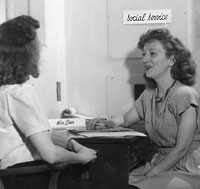
In addition to advances in medical care, Montefiore also made community care a priority. Our Bronx community represents one of the most economically-challenged urban counties in the nation. Inspired by those we serve, Montefiore created the nation’s first hospital-based Department of Social Medicine in 1950.
Montefiore took the idea of social medicine one step further in July 1966 when it created, through $1.9 million in federal funding, the Dr. Martin Luther King Health Center. The funding helped bring a level of comprehensive health care to the South Bronx community that had been relatively non-existent for almost 20 years, involving physicians working directly in the community to meet the local needs of its predominantly Black and Hispanic population. Knowledge of the people, buildings and streets helped physicians get a better understanding of the health problems affecting the local communities they served.
In 1970, the medical center established one of the first residencies in social medicine. At this time, the community-based Lead Poisoning Prevention Program was launched (the program remains a national model to this day) and, for the next two decades, Montefiore began providing care for prisoners at New York City’s Rikers Island Detention Center.
Montefiore also became a model for how other medical centers treated their healthcare workers when, in 1959, it became the first hospital to recognize a hospital workers union, with a standalone 1199 SEIU.
1980s
During the 1980s, Montefiore launched an early response to the emerging AIDS epidemic—earning designation as one of the first comprehensive AIDS Centers in New York State—and established the Child Protection Center, the first center in New York dedicated to the evaluation, treatment, follow-up and prevention of child abuse. In 1981, the Mosholu Preservation Corporation was established as a hospital-sponsored community development and renewal initiative, a powerful antidote to widespread housing deterioration and abandonment.
1990s
The 1990s were a time of clinical advancements at the medical center. In 1991 Montefiore was the first to use Taxol, developed by researchers at our partner institution, Albert Einstein College of Medicine, for the successful treatment of throat cancer.
The following year, Montefiore surgeons were the first in the U.S. to perform a minimally invasive repair of an abdominal aortic aneurysm. As the millennium came to a close, the medical center performed the first carotid stenting using a device to protect patients from stroke and received designation to perform heart transplant surgery.
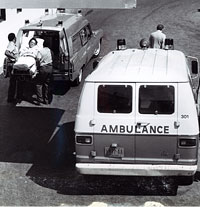
The 1990s also saw the integration of a delivery network between Moses and Jack D. Weiler hospitals to create one true Montefiore. The latter of the two hospitals would open a new, innovative emergency room in 1998.
The New York Children’s Health Fund would collaborate with both Montefiore and Einstein during this time period, establishing the South Bronx Health Center in 1993 serve underserved children and families in the community. The medical center also demonstrated its global reach through an affiliation with the Rabin Medical Center in Israel that saw the two facilities exchange health professionals and collaborate on research. Montefiore would also join with other New York medical centers to form the Biomedical Research Alliance of New York, or BRANY, a clinical research consortium.
The 1990s also saw the creation of the Montefiore Integrated Provider Association (MIPA), providing innovative solutions to the challenges of managed care through contracting arrangements, provider and member services, and its investment in technology and support systems.
Putting patients first, in 1995, we created the Care Management Company to provide medical care coordination and interventions for patient populations, laying the foundation for patient-centered care that focuses on improving clinical quality, enhancing patient experience and reducing healthcare costs.
The following year, Montefiore was one of the first hospitals to utilize Computerized Physician Order Entry (CPOE), a technology designed to help avoid medical errors.
2000 to the Present
In 2001, The Children’s Hospital at Montefiore (CHAM) opened in a leading-edge facility. CHAM would be ranked as one of “America’s Best Children’s Hospitals” in U.S. News & World Report’s annual listing just a few years later.
Montefiore continued to make national headlines in 2004, when it performed the first successful operation to separate twins joined at the tops of their heads.
On the 10th anniversary of Montefiore’s heart transplant designation, in 2009, the first pediatric heart transplant in the Bronx was successfully performed at CHAM. The following year, a rare dual heart and liver transplant was performed by Montefiore’s heart and liver transplant teams.
Toward the end of the decade, in 2008, Montefiore completed its acquisition of Our Lady of Mercy Medical Center and integrated the hospital as part of our Wakefield Campus.
Montefiore also reached milestones in patient care, becoming the nation’s first medical center to develop a Code of Organizational Ethics in 2001, while also leading the development of BronxRHIO, a Bronx-wide consortium to share patient health information.
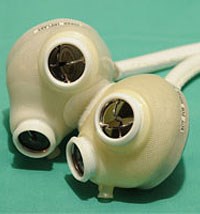
In 2011, advances in treatment included a surgical team from the Montefiore Einstein Center for Heart and Vascular Care receiving certification training for implanting the SynCardia Total Artificial Heart, a replacement heart implanted in patients at risk of imminent death from heart failure as a bridge to human heart transplant. Montefiore’s is one of only two programs in the New York metropolitan area certified to implant this lifesaving device. And Montefiore became the first medical center in the Northeast to provide three types of regional chemotherapy treatments to cancer patients that spare healthy tissue while targeting cancer with potent therapy.
Throughout the last few years, Montefiore has also seen advances in technology, including a state-of-the-art GetWell Network at CHAM that allows physicians to send content to a 42-inch flat screen monitor in every young patient’s room. CHAM patients can also use the network to send email, surf the Internet, watch videos and play games. And Montefiore was among the first medical centers in the country to employ the use of iPads in clinical practice.
Also in 2011, our leadership and more than 15 years of experience in coordinating care across multiple settings to improve the health of patients and populations earned us federal recognition from the Centers for Medicare and Medicaid Services as a Pioneer Accountable Care Organization. Through the formation of highly integrated teams of health professionals, we manage care around the patient—focusing on communication, coordination, engagement and prevention to provide higher quality care while reducing costs.
Today, Montefiore is one of the first health care providers in New York State to demonstrate the “Meaningful Use of Electronic Medical Record (EMR)” technology, harnessing the power of information technology to deliver higher quality healthcare and continuing to advance the health of the communities we serve.
Montefiore Health System: Expansion
Expansion began in late 2013 when we entered Westchester County by opening Montefiore New Rochelle, Montefiore Mount Vernon, Schaffer Extended Care Center and Montefiore School of Nursing on the former site of Sound Shore Health System. It was a transformative moment, like the acquisition of Westchester Square Medical Center in the Bronx, which created a first of its kind full-service Emergency Department earlier in the same year.
We continued to grow in 2014, by signing a comprehensive affiliation agreement with White Plains Hospital, which brought the hospital into our Health System where it now serves as the tertiary hub of Montefiore's Westchester network.
In 2015, we welcomed Nyack Hospital—a leading community hospital in Rockland County, New York—to MHS. Later in the same year, in a series of pivotal moments, our Health System:
- Entered into a clinical affiliation agreement with the Yonkers New York-based Saint Joseph's Medical Center that also includes the St. Vincent's Hospital Westchester Division, one of NY State's most highly regarded inpatient and ambulatory behavioral health providers.
- Announced a strategic partnership with White Plains' Burke Rehabilitation Hospital.
- Welcomed the Hudson Valley-based St. Luke's Cornwall Hospital into our Health System in a partnership that will strengthen delivery of healthcare locally and enhance access to exceptional specialty care for the region's residents.
- Assumed operational authority and responsibility for Albert Einstein College of Medicine in an agreement that came nearly half a century after our landmark affiliation was forged to strengthen excellence in science, education and clinical care.
Today, we're proud of what our institution has and will become in the years ahead.
Montefiore Health System (MHS) is one of the nation's largest, consisting of ten hospitals; a primary and specialty care network of more than 200 locations across Westchester County, the lower Hudson Valley and the Bronx; an extended care facility; the Montefiore School of Nursing, and our Albert Einstein College of Medicine.
As MHS, we are building upon a more than 125-year history, while at the same time remaining true to our mission and values and forging a new era of transformative medicine.



